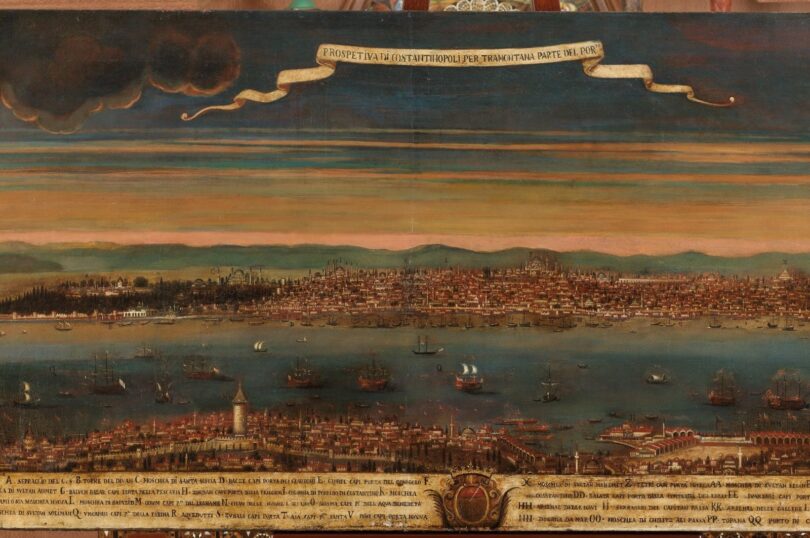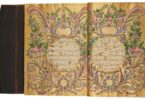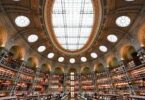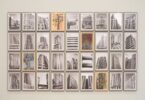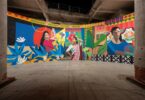Buse Keskin
ISTANBUL : The ‘On the Spot’ exhibition at the Pera Museum is a comprehensive exploration of the panoramic perspective in Istanbul, from the 15th to 20th centuries
The “On the Spot” exhibition, the result of five years of dedicated work by the team from the Suna and Inan Kıraç Foundation’s two institutions, the Pera Museum and the Istanbul Research Institute, opened its doors to visitors on Oct. 25.
The foundations of this exhibition, which began with a donation story, were laid four years ago with the acquisition of an undated and anonymous 3.5-meter-long (11.5-foot-long) Istanbul panorama, which was incorporated into the Suna and Inan Kıraç Foundation Collection.
Throughout history, Istanbul, with its significant political and symbolic importance, has had a nature conducive to being depicted by artists, making it a highly interesting place for many creative minds. As a place where images take shape, this panoramic city, emerging with historical context, can be explored through different representations displayed in the exhibition.
Curated by leading history academics such as Çiğdem Kafescioğlu, K. Mehmet Kentel, and M. Baha Tanman, at the news conference, Çiğdem Kafescioğlu specifically addressed the perspectives on the title “On the Spot” in a masterful way.
According to Kafescioğlu, the city’s landscape is an indispensable part of daily life. Moreover, it is crucial for intellectual circles, literature, and cultural life. It is by no means a passive landscape; instead, it offers a spatial experience unique to this city.
For this, the title also refers to the “Tepebaşı” district, where the Pera building, where the exhibition is held, is located, which was once the site of the old Bristol hotel. This area, which was once used as a cemetery and a recreation area and later hosted Istanbul’s first modern parks, is the most integral part of inner-city Istanbul, providing viewers with the opportunity to observe the city panoramically. Therefore, it offers the best experience of being in the city “on the spot.”

Panorama, Istanbul relation
In fact, during the late 15th century when these works represented the city, there was no word used for panorama. It was Robert Barker’s “invention” – the Greek words “pan” (all) and “horama” (view) – of the panorama in the final years of the 1700s that led to the public display of giant paintings on the walls of a rotunda. These paintings were viewed from a platform constructed at its center, and this word was coined to denote this style. The 360-degree image, detached from the walls of a cylindrical building, diminished in scale and flattened out, became an object of visual and material consumption on its own.
Robert and Henry Aston Barker advertised their Constantinople panorama as giving their London audiences a chance to see the city “as if on the spot.” They emphasized that it had been drafted “on the spot,” from the Galata tower. This echoed the gestures and words of numerous travelers and draftsmen from preceding centuries, who had emphasized their physical presence and personal observation on-site, validating the empiricism and truthfulness of their city portraits. The Barkers’ assertion also inspired the title of the exhibition at Pera Museum.
Firsts in exhibition
According to Kafescioğlu, the first modern panorama is being exhibited in Scotland. Istanbul is the first city, after British territories, to be attempted to be represented with this style worldwide. This exhibition includes a copy of the first panorama drawn of Istanbul. It is also one of the oldest panoramas of the city ever drawn.
Covering a period from the 15th to the 20th centuries, the exhibition features a unique rotunda where visitors can experience a previously unknown 19th-century panorama of Istanbul in an immersive and interactive setting, as well as a 3D animation of a widely recognized panorama.
Pupil of the eye
The 19th-century entertainment, gaze and spectacle experience offered by these “panoramas” historicized and contextualized their many iterations and dimensions. While bringing together some of the most remarkable works by artists who captured a panoramic view of Istanbul, such as Robert Barker, Philipp Ferdinand von Gudenus, Joseph Schranz, Antoine-Ignace Melling, Montagu B. Dunn and James Robertson, the exhibition also reveals how the panoramic perspective has been used to document different phenomena in Istanbul’s history, from fire disasters to industrialization.
However, the aim here is not to embark on a historical journey. The curation of the exhibition has attempted to create an original design and presentation, inviting viewers to experience it within a societal context.
It must be stated that especially this year, this is the third exhibition dedicated to Istanbul panoramas. In addition to exhibitions opened by Meşher and Galata Greek School, the planning that goes five years back for the Pera Museum and the collaborative knowledge-sharing among all institutions, along with a serendipitous encounter, perhaps help us grasp the significance and texture of Istanbul better. Simultaneously, it prompts us to contemplate how we can preserve the city within this rapid transformation. Therefore, these exhibitions should not be seen as an experience of Istanbul nostalgia.
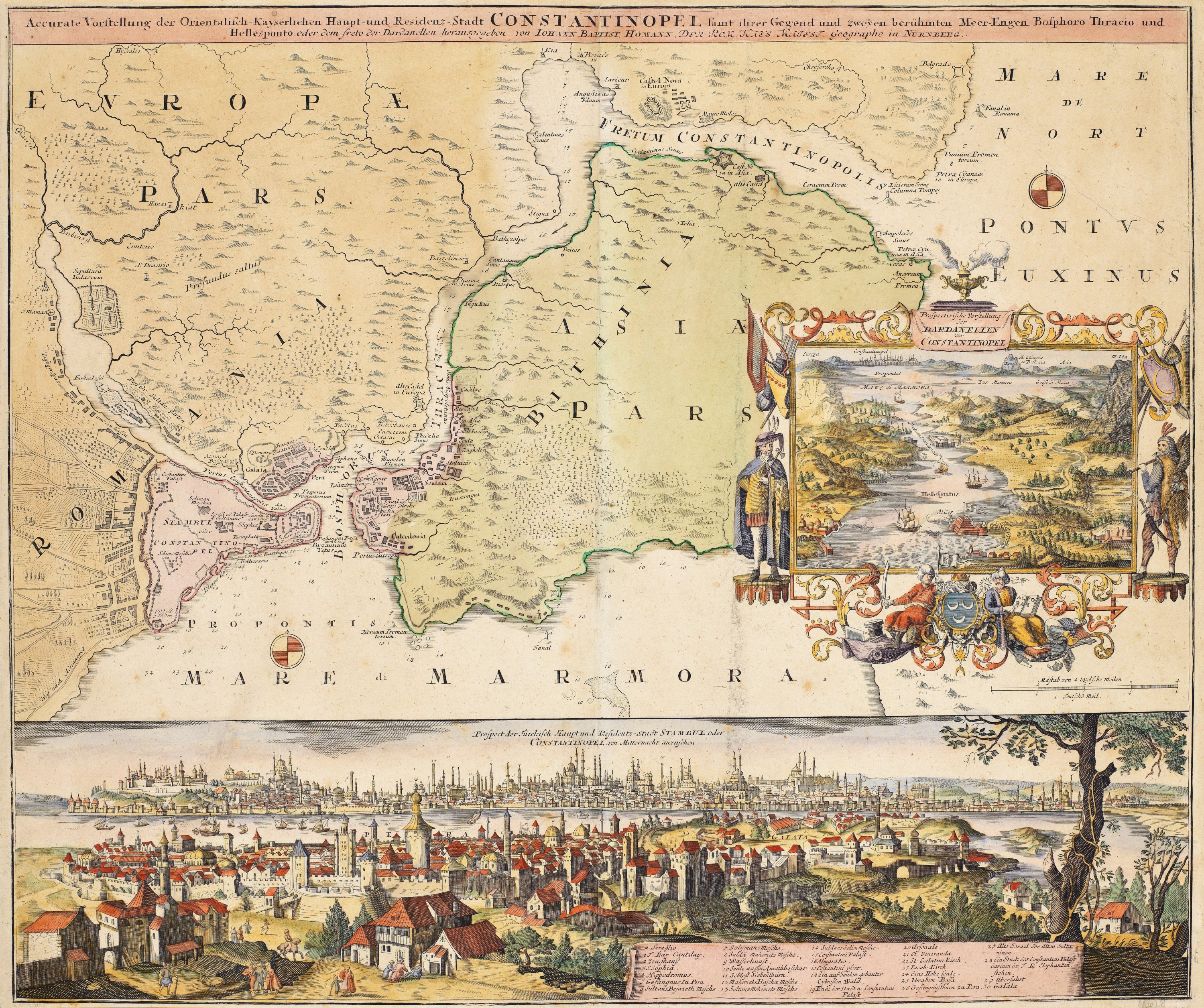
Works
The joint curatorial efforts provide a close examination of the circulation of this representational form in the Ottoman world and Europe through a diverse selection of materials, including ephemera and archival documents in addition to paintings, prints and photographs, while exploring the fluidity within this diversity and the dialogues between different media. While concentrating on 19th-century panoramas and panoramic images, “On the Spot” invites its audience to a comprehensive reconsideration of the long history of the panoramic perspective dating back to the early modern period and Istanbul’s position within this history.
Consisting of three sections, the exhibition starts with an overview of panoramic views of Istanbul dating to the early modern era (the 15th through 18th centuries). Displaying the significant items and moments in this trajectory, this section also aims to highlight connections between different modes of picturing the city in its totality in the early modern era. Henry Aston Barker’s panorama of Constantinople, drafted in Istanbul in 1800 and displayed in London in 1801 and 1802, marks a defining moment in the genre’s modern history.
The exhibition addresses the Barker panorama by not only showing original prints of the painting exhibited in London but also notes from Henry Aston Barker’s diary that provide glimpses into its making, as well as a 3D animation that highlights various details within the painting alongside the latter’s comments. Panoramic photography, which is addressed in the following section, entered the 19th-century visual universe with pomp and circumstance.
The heightened sense of reality its practitioners promised captivated the public imagination and experts alike, from urban reformists to insurance agents who were drawn to this new medium that could more easily engender multiplication in different formats, leading to a visual inflation of countless works of panoramic images of the city’s varying vistas.
The final section of the exhibit turns to intermedial transitions, between the images circulating in different formats and their continued connections within diverse modes of visual representation. The culture of spectacle attached to the dissemination and consumption of panoramic images and the expanding commodity culture of the early 20th century brought the panoramic image to bear on an increasingly diverse set of objects, ranging from trade cards to delicately embroidered silks.
Publications
Studying the circulation of the panoramic representation in the Ottoman Empire and Europe through a wide selection of materials, including images, engravings, photographs, ephemera and archival documents, “On the Spot: Panoramic Gaze on Istanbul, a History” is complemented by an in-depth catalog that aims to reexamine Istanbul’s history of urbanism, architecture, art, photography and modern consumerism through panoramas.
Following the exhibition’s suite in its historical outlook on the panoramic medium and Istanbul’s place within it, the publication features articles by Erkki Huhtamo, Çiğdem Kafescioğlu, A. Hilal Uğurlu, Namık Günay Erkal, M. Baha Tanman, Ahmet A. Ersoy, K. Mehmet Kentel and Tarkan Okçuoğlu.
Providing a comprehensive outlook on Istanbul’s place in the global history of panoramic representation, the exhibit invites viewers, in the word of the curators, to ponder the following questions: “What would a panorama of the connections and contentions between the culture and arts scene in present-day Istanbul and the drastic transformation of its city and nature scapes look like? And finally, could this have been one last opportunity to take a panoramic view of how the city looked and was represented in the past, ahead of the looming disasters of earthquakes and ecological crises?”
With the exhibition and catalog design by PATTU Architecture, “On the Spot: Panoramic Gaze on Istanbul, a History” will be open to visitors on Pera Museum’s third floor until March 24.
Courtesy: Dailysabah

